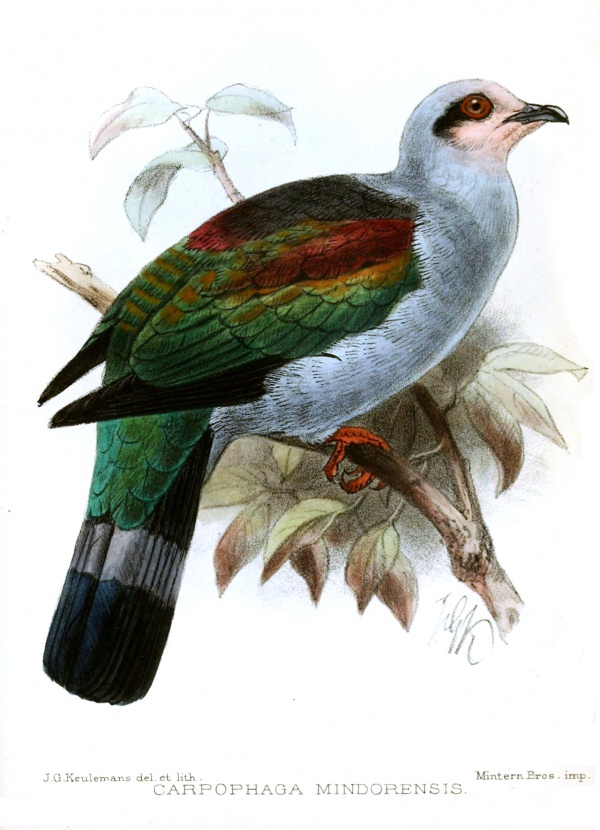Facts About Mindoro imperial pigeon
The Mindoro imperial pigeon, also known as the Mindoro zone-tailed pigeon, great Mindoro pigeon, or pink-throated imperial pigeon, is a unique species endemic to the mountainous regions of Mindoro in the central Philippines. Sadly, this exquisite bird is classified as Endangered on the IUCN Red List due to factors such as habitat loss and hunting.
The Mindoro imperial pigeon is the largest pigeon in the Philippines, measuring between 42 and 50 cm in length. It boasts a striking appearance with a pinkish-grey forehead and throat, and a blend of grey, green, and black across its body. Notably, males and females exhibit different eye and eyelid colors, adding to their distinctive look.
This pigeon belongs to the genus Ducula and was first described by John Whitehead in 1896. It is closely related to other species within the genus, such as Ducula poliocephala and Ducula forsteni.
The Mindoro imperial pigeon thrives in the closed canopy forests of Mindoro. Historically found at higher altitudes, the species has been forced to lower altitudes due to habitat destruction, and is now primarily seen in understory trees of the remaining low-altitude forests. These birds are rare, with notable sightings primarily around Mount Ilong and Mount Halcon. Their habitats face constant threats from logging, cultivation, and deforestation.
Typically observed alone, in pairs, or in small groups, these pigeons prefer to roost in the canopy alongside other pigeon species, making them somewhat elusive. Their call, a deep and resonant sound often heard at dawn, can provide clues to their presence. Their diet consists of a variety of fruits, from small berries to larger ones. While information on their breeding habits is limited, some breeding activities have been observed in April, with sightings of immature birds in August.
